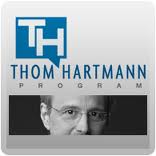 This week, it appears that President Obama got the Senate to give him “fast-track” authority for the Transpacific Partnership and the House isn't far behind.
This week, it appears that President Obama got the Senate to give him “fast-track” authority for the Transpacific Partnership and the House isn't far behind.
For months, the Obama administration and supporters of “Obamatrade” have been saying that the TPP is about supporting free trade with Pacific Rim countries. But the president last week hinted at the real reason why the administration is putting so much effort into passing this trade deal.
The TPP does not include China, and Obama is apparently hoping that the trade deal will help block China from becoming the world’s economic leader. But as Elizabeth Warren has pointed out, “free-trade” deals historically have never helped American workers or supported American manufacturing.
And the TPP won’t change the fact that China is, today, central to the political economy of the Pacific region.
In fact, China is already the largest trade partner with Japan, Singapore and Australia - three key countries involved in the TPP. China's also the number one trade partner with South Korea and India , two economic powerhouses in the region that are not taking part in the TPP.
And while supporters of the TPP point to China as our biggest economic competitor, what little we know about the TPP suggests that it would promote the exact policies that have destroyed the American middle class and have allowed China to become the world’s largest manufacturer.
When Barack Obama took office, America was in the midst of the largest economic recession since the Great Depression, and the president’s stimulus package and his tax cuts for the middle class , the largest middle-class tax cut in the history of America, helped slow the recession .
Working class Americans had more disposable income to buy goods, but the only TVs, computers and other goods that we could buy were made abroad.
Thus, the Obama stimulus created manufacturing jobs, but most of them were in China and America’s other “free-trade” partners , countries where they still manufacture things. That’s why more American spending only created a few American jobs after the stimulus , as soon as US consumers bought foreign-made products, those stimulus dollars went offshore.
George Washington faced the same problem looking for an American-made suit to wear for his inauguration. Following the American Revolution, America had no manufacturing base as a result of Britain's colonialist economic policy.
Britain relied on its colonies for raw materials, which would then be shipped to England and manufactured to be sold across the world. So when America gained independence we were mainly a farming economy , but the Founders knew that it was vital to build American manufacturing at home if we were to become a strong nation.
George Washington managed to find an American-made suit to wear for his inauguration , and when he took office he asked his Treasury Secretary, Alexander Hamilton, to develop a plan to promote manufacturing in the new United States.
Hamilton came up with an eleven point plan for American manufacturers, including high protective tariffs on certain foreign goods and subsidies for American manufacturers.
Hamilton knew that when a country manufactures things, to paraphrase Adam Smith, in grows the "wealth of the nation". And with more wealth, people can buy more, and the economy grows. But it starts with making things. It starts with manufacturing at home.
So to end the decline of the American middle class today, just like in 1793, we must once again grow -instead of offshoring and shrinking - American manufacturing. And that starts with ending our obsession with so-called “free-trade” deals - deals that allow multinational corporations to ship manufacturing abroad and throw American workers out of a job.
It starts with ending Permanent Normal Trade Relations with China, and ending US participation in the WTO, NAFTA and CAFTA - and the whole bunch of other trade agreements we've signed since Reagan began this binge.
Which is why this week, Congress should have rejected the president’s request for “fast-track” trade promotion authority, what they're calling "TPA" or "Trade Promotion Authority", Fast Track by another name , and they should reject SHAFTA once and for all.
Despite what President Obama says, the system Alexander Hamilton and George Washington put into place in 1793 and stood until the Reagan Revolution of the 1980s, over 190 years that turned us into the industrial powerhouse of the world, was not about closing ourselves off to the world, it was about encouraging American businesses to manufacture goods that American workers made and sold in America.
And it doesn’t end with rejecting TPA and SHAFTA. It’s time to put tariffs on foreign goods and to turn those tariffs into investments for American businesses: to fund research and development and to help reduce start-up costs for American innovators who will employ American workers.
We have to invest in American infrastructure - creating American construction jobs and providing a fertile soil for business to take root - so that American businesses can be certain that workers and goods can move from American factories to American stores and consumers.
Washington and Hamilton were right, and Reagan, Bush, Clinton, Bush, and Obama are wrong.
Thirty-five years of Reaganomics and so-called “free-trade” deals have devastated American manufacturing and the American middle-class that it had created. Which is why we need to re-embrace Hamilton’s system that grew American manufacturing and restore our middle class.
It's simple, really. Americans should be able to buy products made in America, and American workers should again have access to good manufacturing jobs.
We've done it before, and did it well. China, right now, is following Hamilton's plan. It's time for us to walk away from Reaganism and rebuild our once-great nation.
Would Washington have asked for "Fast Track?"
By Thom Hartmann A...



